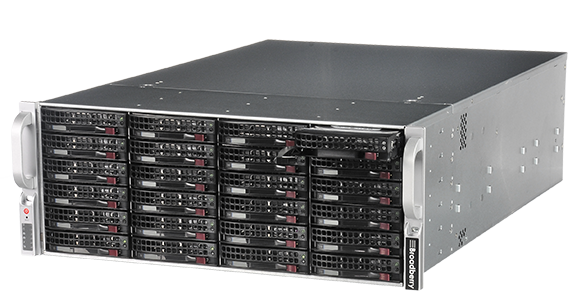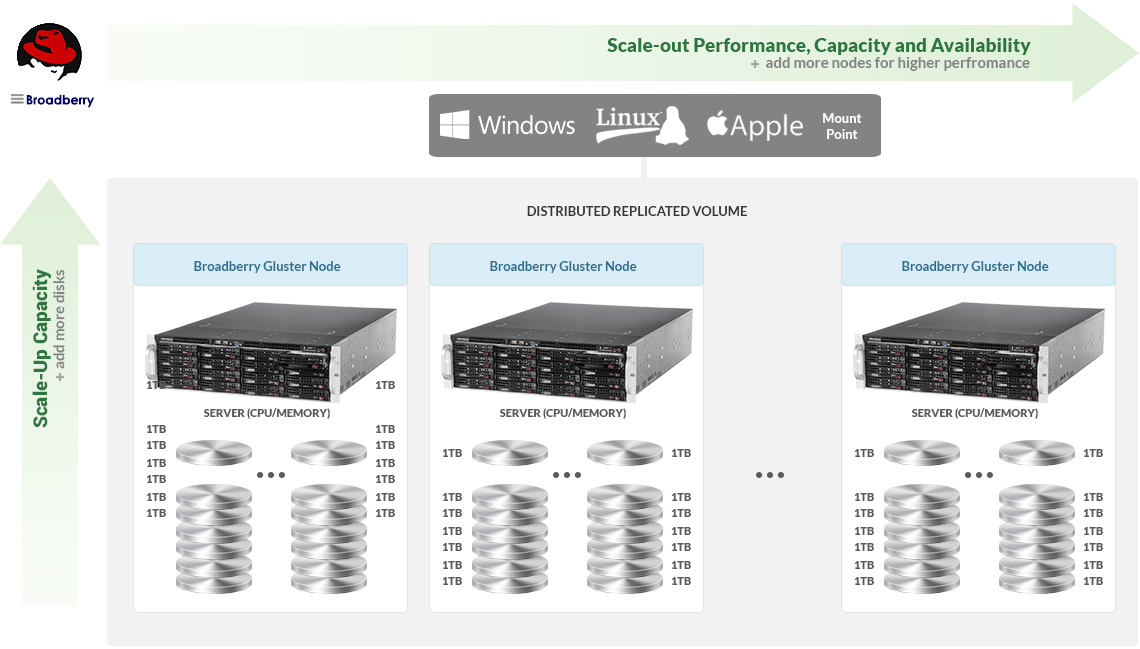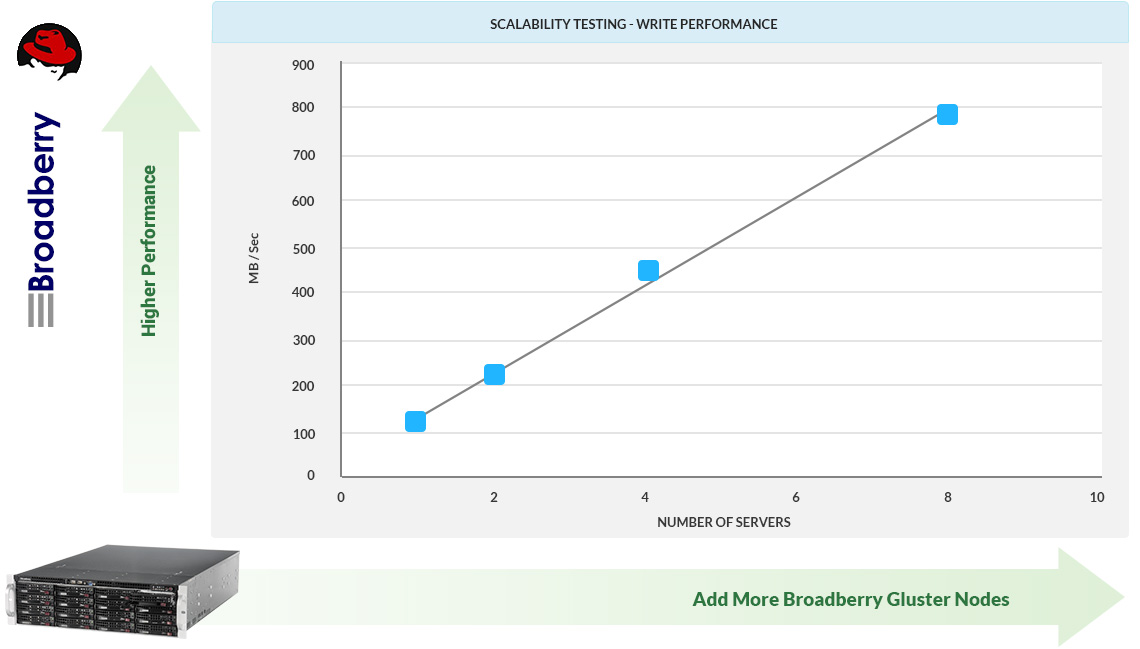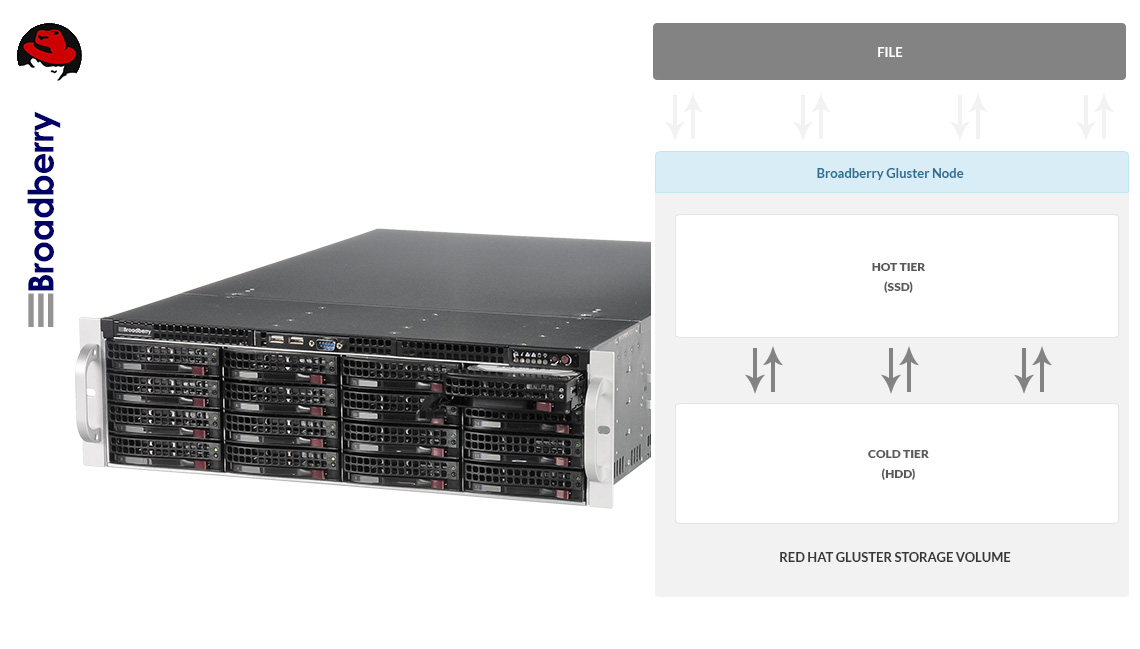Red Hat Gluster HA Array Build your Failover Cluster

Scale-out NAS storage for modern enterprise workloads
- Scale-Out and Scale-Up
- Load-Balancing
- Open-Source
- Easy Online Management
- Single Global Namespace
- Replication
- Snapshots
- and much more...
What is Red Hat Gluster?
Gluster is a distributed scale out filesystem that allows rapid provisioning of additional storage based on your storage consumption needs. It incorporates automatic failover as a primary feature. All of this is accomplished without a centralised metadata server.




 Broadberry Red Hat Gluster Nodes
Broadberry Red Hat Gluster Nodes

 2UForm Factor
2UForm Factor 3.5" Drives
3.5" Drives 12 Drive Bays
12 Drive Bays 192
192
 24 Drive Bays
24 Drive Bays 36 Drive Bays
36 Drive Bays









 Due to the height of this server a PCI-Express card will not physically fit unless you use a riser card.
Due to the height of this server a PCI-Express card will not physically fit unless you use a riser card. 